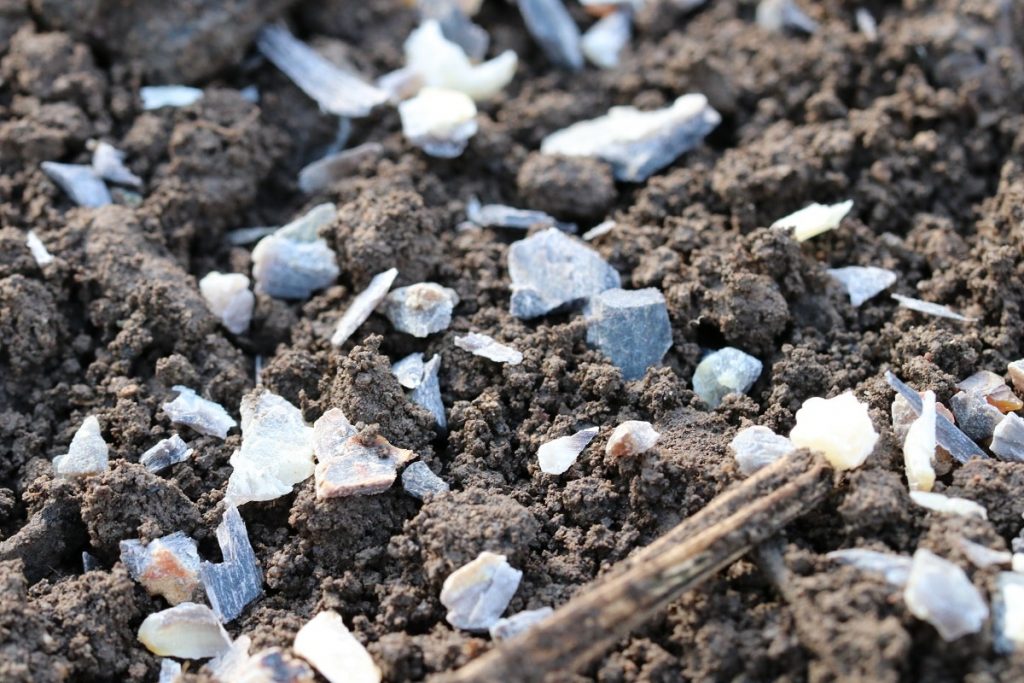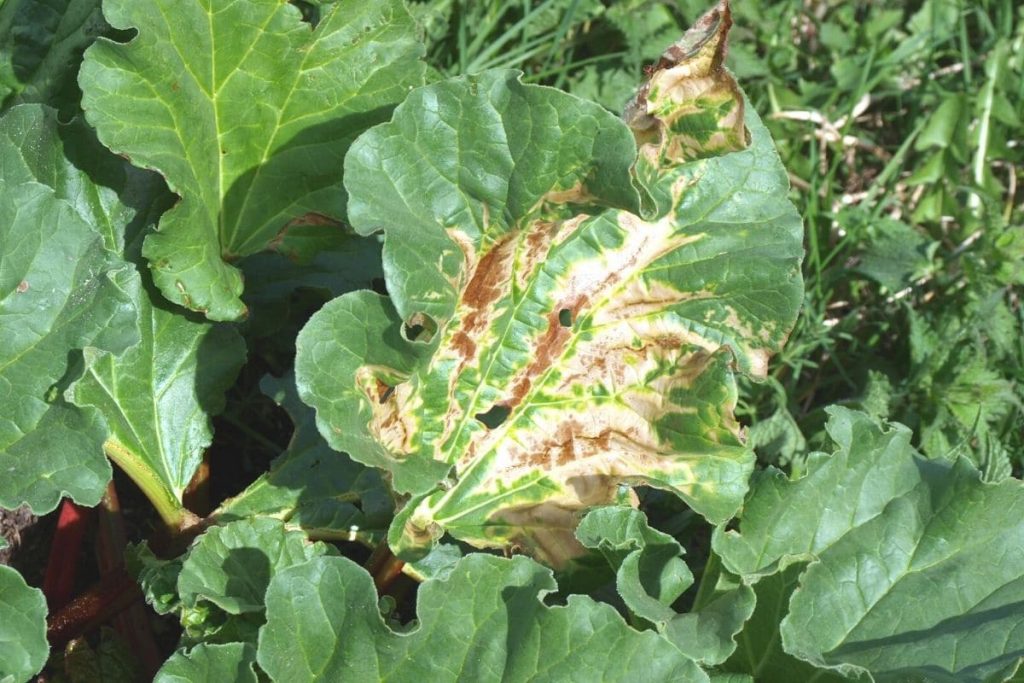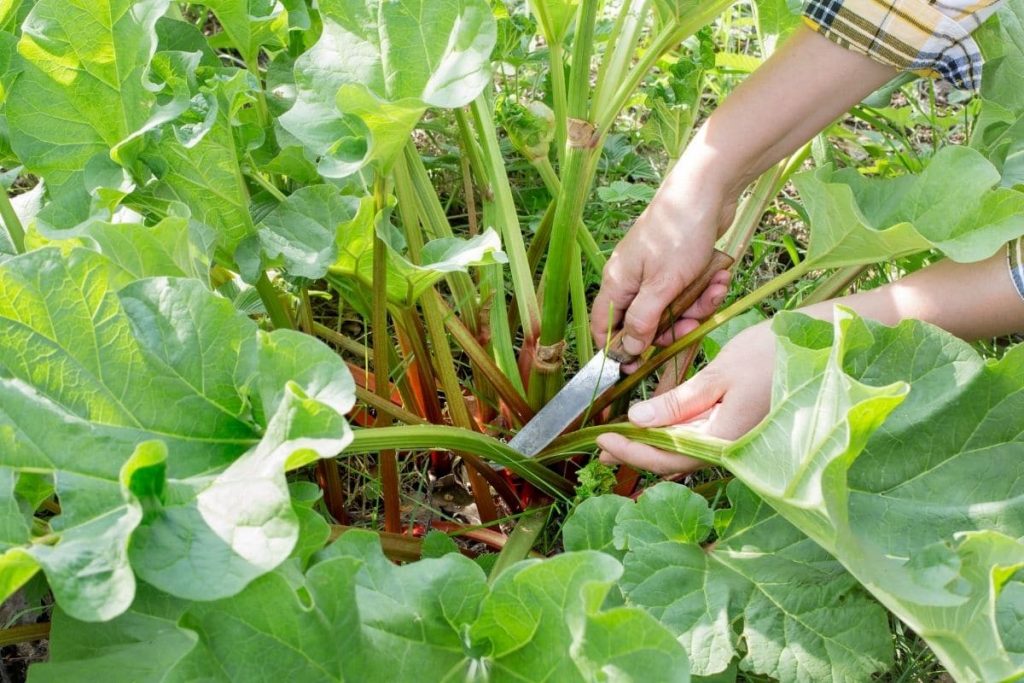If the rhubarb in the garden bed cares and does not grow, then this may have several causes. The following article takes a closer look at them and explains what to do in such a case.
- various reasons for stunted rhubarb growth
- Do not plant rhubarb on the same garden bed for more than seven years
- do not cut off rhubarb leaves before winter
- give rhubarb perennials enough space in the bed
- rhubarb plants grown from your own seeds often grow stunted because they are not true to variety
Contents
- 1 Incorrect care
- 2 Leached bed
- 3 Mosaic disease
- 4 Seeds are no good
- 5 Incorrect cutting
- 6 Forget about rejuvenation by division
- 7 Frequently asked questions
- 8 Why should I change my rhubarb bed after seven years at the latest?
- 9 How can I propagate the same variety?
- 10 What else should I consider for healthy rhubarb growth?
- 11 Author
Incorrect care
By all means, the wrong care can be one of the causes when the rhubarb plant cares and does not grow properly. Giving too much fertilizer or water can also be to blame, which can be avoided with these measures:
- fertilize vigorously from February to June
- use compost rich in nutrients and humus for this purpose
- work it in carefully around the plants
- spread horn shavings as well
- mulch the soil with lawn clippings and leaves
- Water regularly
- directly to the roots
- never on the leaves
- Avoid waterlogging at all costs
- create drainage when planting in the planting hole

Tip: For drainage you need smaller stones or gravel. These you put on the bottom of the planting hole before you put the rhubarb. Therefore, you should also always dig the planting hole a little deeper than recommended.
Leached bed
Quite important is the garden bed on which the rhubarb grows. Because here, too, can be the reasons that the plants do not grow. This is what you should consider when choosing a bed, so that rhubarb does not care:
- When were plants first cultivated in the bed.
- rhubarb plant should change bed after seven years.
- otherwise it will not grow and will take care
- remove all plants
- divide and propagate if necessary
- create a new bed
- can be used for the next seven years
Mosaic disease
If the stems grow vigorously at the beginning and large leaves are formed, but over time a kind of necrosis appears, then it is the mosaic disease, which can catch the perennials:

Tip: If the plants are too dense, rainwater on the leaves can not drip off quickly enough and diseases can occur on the rhubarb.
Seeds are no good
If you let your rhubarb bloom in the summer, you hope to harvest seeds from it later in the fall. But often sowing does not succeed:
- Rhubarb no longer varietal
- stalks grow stunted
- remain thin and long
- remove these rhubarb plants from the bed
Tip: If you want more rhubarb plants and propagate theirs, the best way to do this is to divide the roots.
Incorrect cutting
If the stems were removed for consumption in the spring until about June, the rest of the plant should be left to itself:

- do not remove to many leaves
- so the rhubarb plant can draw strength for the next year
Note: If you remove everything above ground from the rhubarb in the summer or fall, it will lack the strength to grow vigorously the next year and will care and form only thin stems.
Forget about rejuvenation by division
Rhubarb plants are perennial. However, as they age, they become more and more exhausted and the stems grow only thin and the plant as a whole takes care of itself. However, this can be well prevented with various measures:
- look for older plants in the bed
- remove with the root of the soil
- divide the root with a spade
- cut off about two to three 500 gram pieces of root
- let the cut dry
- can be planted elsewhere in the garden
- plant forms new roots here
- grows healthy again
Tip: If you divide a few older plants each fall, you can gradually move from the old bed to the new.
Frequently asked questions
Why should I change my rhubarb bed after seven years at the latest?
Rhubarb perennials are heavy growers and therefore leach heavily into the soil they were planted in. Also, the rotted roots on an old plant often prevent the new plant from thriving. Therefore, it is recommended that perennial hardy plants be removed from the bed after seven years at the latest, divided and replanted in another bed.
How can I propagate the same variety?
As already explained, seeds of your own rhubarb plants present in the garden are usually not suitable for growing new plants. These usually also do not grow true to variety right from the start and therefore quickly wither away. However, by regularly dividing the roots, you can grow a varietal plant again that will yield just as much as the first one.
What else should I consider for healthy rhubarb growth?
If you are starting a new bed of very fresh rhubarb plants or replanting divided plants, then you should wait to harvest. Here it is recommended not to harvest at all for the first two years, even if it is difficult. Because in this way the young rhubarb plant can first draw a lot of strength, which will help it to grow vigorously from the third year. Divide always delayed each year only a few of your plants, you can also harvest throughout.

